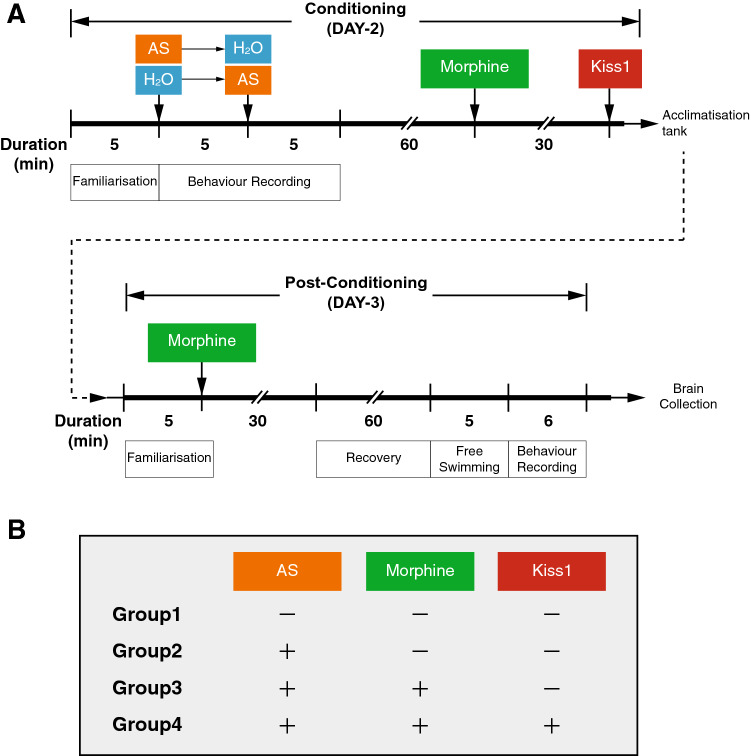Figure 4.
Treatment timeline and treatment groups during the fear conditioning. (A) Schematic of treatment timeline during the fear conditioning. On Day-2, the fish was transferred to either the preferred compartment or non-preferred compartment (at random), and control fish were treated with 5-min of water in preferred and non-preferred compartments (Non-AS, Group 1). Treatment groups (Groups 2–4) were exposed to alarm substance (AS) or water, respectively for 5-min. After 5-min treatment, the fish was transferred to the other side of compartment (preferred to non-preferred or vice versa) and exposed with AS or water for 5-min followed by transferring to the acclimatisation tank (AS-treated group, Group 2). For morphine-treated group (Groups 3 and 4), after one hour of recovery from fear conditioning, the fish were then treated with morphine (2 mg/l) or vehicle (water) for 30-min and transferring to the acclimatisation (housing) tank. On Day-3, the fish were placed in the centre compartment of experimental tank with the separators. After familiarisation period, the fish was again treated with morphine before the post-conditioning test. For Kiss1-treated group (Group 4), morphine-treated fish were centrally administered with 1 µl of Kiss1 (zebrafish kisspeptin1-15) at the dose of 10–21 mol/fish or 1 µl of water (control) before transferred to the acclimatisation (housing) tank. Four different treatment groups were summarized in (B).

